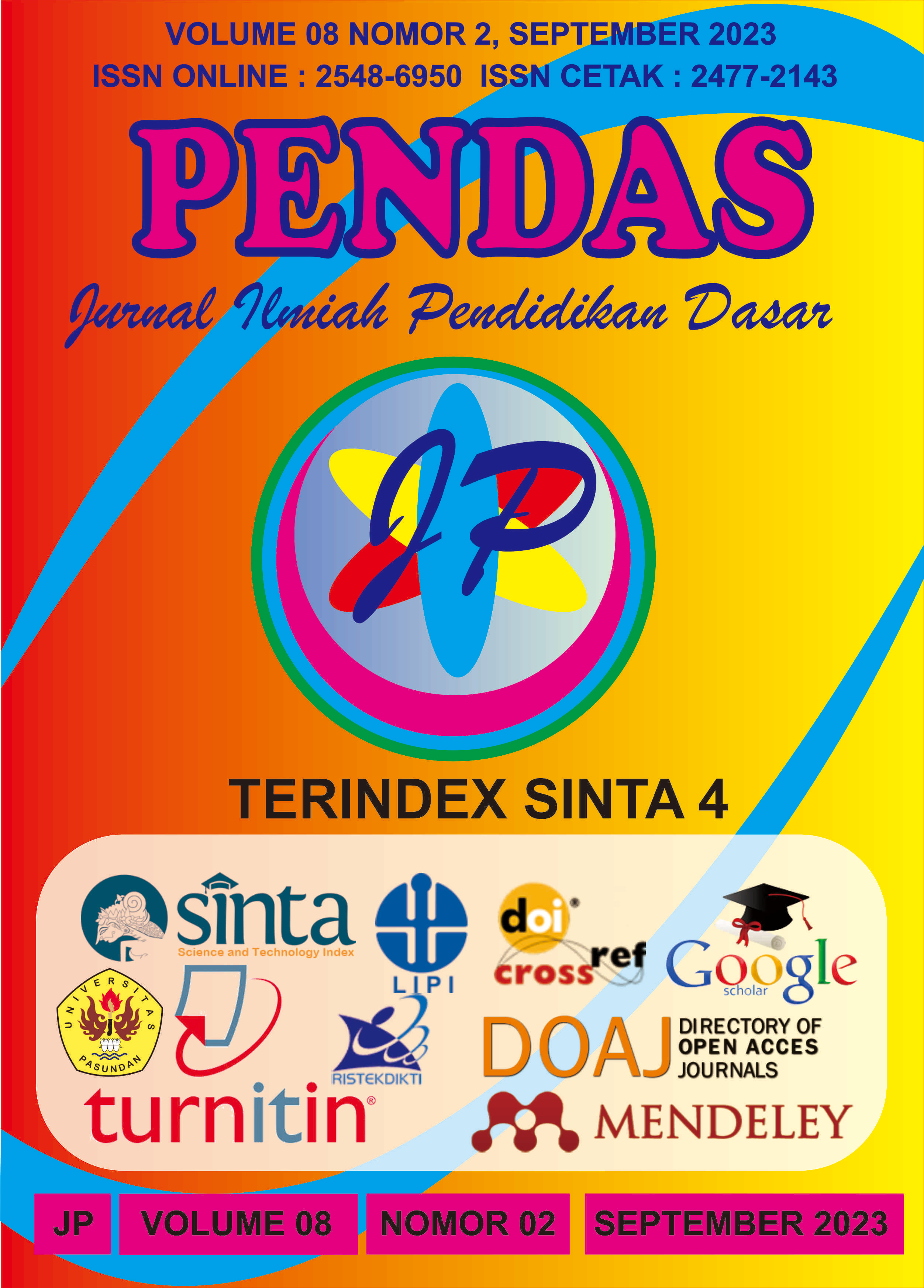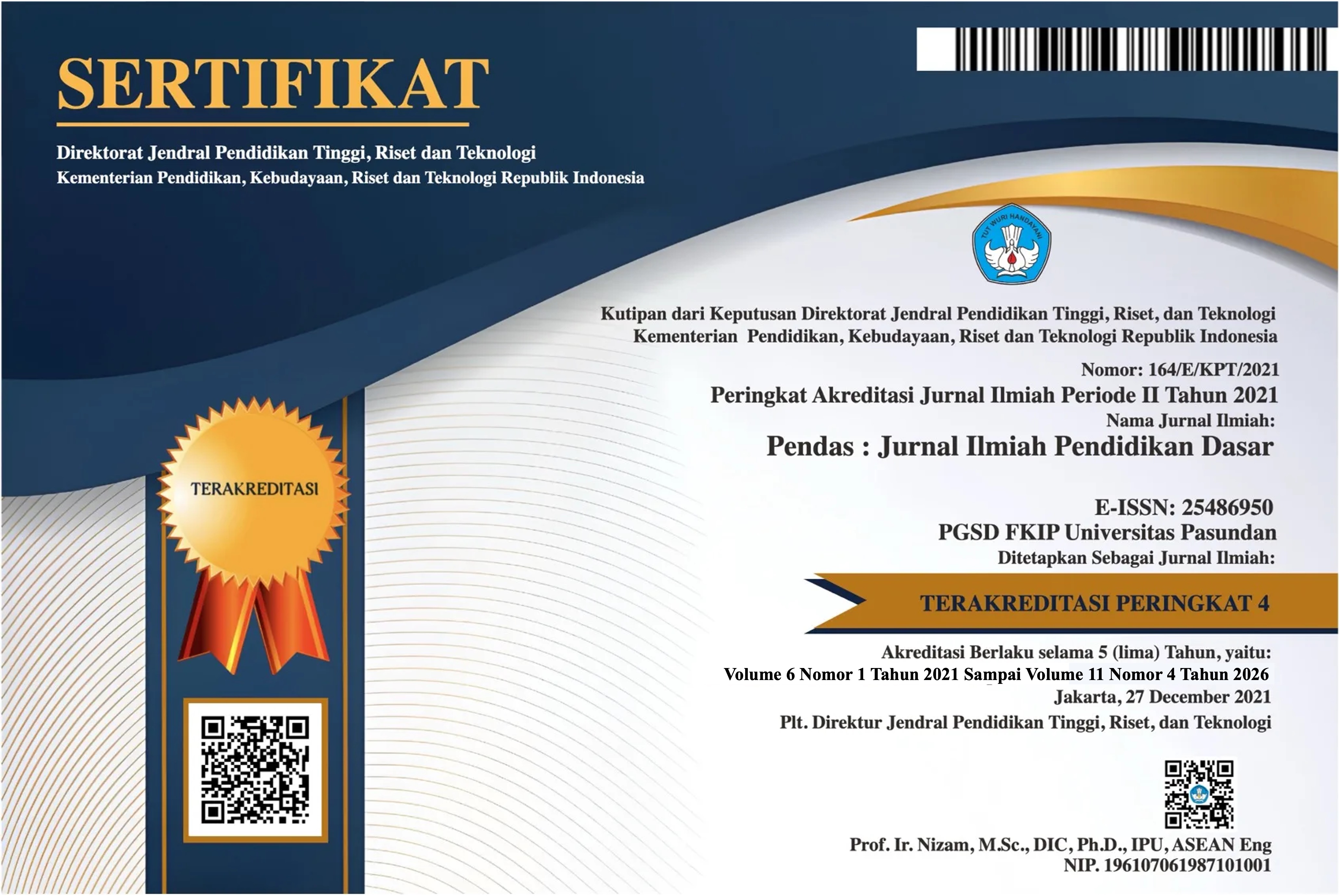EFEKTIVITAS MODEL PEMBELAJARAN KOOPERATIF TWO STAY TWO STRAY TERHADAP HASIL BELAJAR SISWA KELAS V SD NEGERI 24 PALEMBANG
Keywords:
effectiveness, learning outcomes, TSTS modelAbstract
This research is based on the problems that occur, namely the low student learning outcomes there are still many student scores below the established Maximum Mastery Criteria. Because students tend to be passive in learning and the teacher's lack of ability to place learning models that are appropriate to the learning material being taught. This is because the use of learning models has not been implemented properly where teachers only use conventional learning models, namely lectures, resulting in low student learning outcomes, especially in science lessons. This study aims to determine whether or not the Two Stay Two Stray learning model is effective for the learning outcomes of fifth grade students at SDN 24 Palembang. The method used by researchers is a quasi-experimental method with a non-equivalent control group design. Data collection techniques using observation, tests, and documentation. Data analysis used normality test, homogeneity test, t-test, N-gain test. Based on this study, data analysis and discussion are proven by calculating the N-gain test showing that the calculation results obtained a value of 0.7699 or > 76, which means that the Two Stay Two Stray learning model is effectively used compared to the conventional learning model. And the results of the calculation of the t-test with a significant level of 0.05 obtained a degree of 0.000 which is smaller than the significant value (sig) of 0.05, which means 0.000 <0.05. The results showed that Ho was rejected and Ha was accepted, meaning that there was an effectiveness of the Two Stay Two Stray learning model for the learning outcomes of fifth grade students at SD Negeri 24 Palembang.Downloads
References
Elisabeth, Marlina, & Sam. (2020). Efektifitas Model Pembelajaran Kooperatif Tipe Two Stay Two Stray Terhadap Peningkatan Prestasi Belajar IPS Siswa SD. Literasi Pendidikan.
Handayani, & Radia. (2018). Efektifitas Model Pembelajaran Two Stay Two Stray (TSTS) Ditinjau dari Hasil Belajar Siswa Kelas V SD Pada Mata Pelajaran Matematika. 15-21.
Lestari, P., & Hudaya, A. (2018). Penerapan Model Quantum Teaching Sebagai Upaya Meningkatkan Hasil Belajar SIswa Pada Mata Pelajaran IPS Kelas VIII SMP PGRI 3 Jakarta. Jurnal Pendidikan.
Nurmayani, L., Doyan, A., & Sedijani, P. (2018). Pengaruh Model Pembelajaran Inkuiri Terbimbing Terhadap Hasil Belajar Fisika Peserta Didik. Jurnal Penelitian Pendidikan IPA, 2-7.
Pratama, Suwatra, & Wibawa. (2021). Efektifitas Model Pembelajaran TSTS (Two Stay Two Stray) Terhadap Hasil Belajar IPA Siswa SD. 32-39.
Rahmadyanty, R., Selegi, S. F., & Syaflin, S. L. (2023). Efektifitas Penerapan Model Pembelajaran Somatic Auditory Visual Intelektual (SAVI) Terhadap Hasil Belajar Siswa Kelas V SD. ALPEN : Jurnal Pendidikan Dasar, 1-10.
Shoimin, A. (2021). Model Pembelajaran Inovatif Dalam Kurikulum 2013. Ar-Ruzz Media.
Sholeh, K., Srinindiati, D., Suriadi, A., Ahyani, N., Suryani, I., Zamhari, A., . . . Idris, M. (2019). Nilai-Nilai Situs Bersejarah Di Sumatera Selatan Sebagai Penguat Karakter Di SMK PGRI Lahat. Jurnal PKM : Pengabdian Kepada Masyarakat, 234-245.
Sulistyanti, L., Siahaan, E., & Junaidi. (2019). Pengaruh Model Pembelajaran Two Stay Two Stray (TSTS) Dipadukan Dengan Metode Demonstrasi Terhadap Hasil Belajar Kimia. 17.
Downloads
Published
Issue
Section
License
Copyright (c) 2023 Pendas : Jurnal Ilmiah Pendidikan Dasar

This work is licensed under a Creative Commons Attribution 4.0 International License.



















